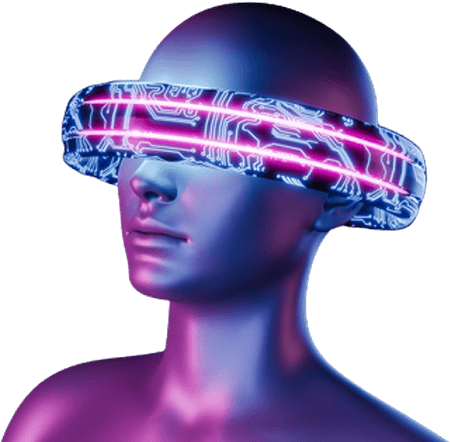Can Claude 3 AI Read PDF?
Can Claude 3 AI Read PDF? In today’s digital age, the ability to efficiently process and extract information from various file formats has become increasingly important. As artificial intelligence (AI) technology continues to advance, we are witnessing a paradigm shift in how we interact with data.
One such innovation is the Claude 3 AI model, developed by Anthropic, a leading AI research company. This sophisticated AI system boasts impressive capabilities, including the ability to read and comprehend PDF files. In this comprehensive article, we will delve into the details of Claude 3’s PDF reading capabilities, exploring its potential applications, limitations, and the future implications of this technology.
Understanding Claude 3 AI
Before diving into the specifics of Claude 3’s PDF reading abilities, it’s essential to understand the underlying technology and its place in the AI landscape.
Claude 3 is a large language model (LLM) trained by Anthropic using advanced machine learning techniques. LLMs are a type of AI system that can understand and generate human-like text based on vast amounts of training data. Claude 3 is designed to be a versatile and powerful tool, capable of handling a wide range of tasks, from natural language processing and question answering to creative writing and code generation.
One of the key features that sets Claude 3 apart is its impressive vision capabilities. Unlike many traditional AI models that focus solely on textual data, Claude 3 can process and comprehend various visual formats, including photographs, charts, graphs, and technical diagrams. This ability to understand both text and visual information makes Claude 3 a highly valuable asset in numerous industries and applications.
PDF Reading Capabilities of Claude 3
PDF (Portable Document Format) is a widely used file format for sharing and distributing documents across various platforms and devices. These files often contain a combination of text, images, and other visual elements, making it challenging for traditional AI systems to process and extract meaningful information.
However, Claude 3’s advanced vision capabilities enable it to read and comprehend PDFs with remarkable accuracy and efficiency. Here’s a closer look at how Claude 3 handles PDF files:
Optical Character Recognition (OCR)
- Claude 3 leverages state-of-the-art OCR technology to extract text from PDF files, even when the documents contain complex layouts, tables, or handwritten text.
- This capability allows Claude 3 to convert the visual information in PDFs into machine-readable text, which can then be processed and analyzed using its natural language processing capabilities.
Image and Visual Understanding
- In addition to text extraction, Claude 3 can interpret and understand the visual elements within PDF files, such as charts, graphs, diagrams, and illustrations.
- This visual understanding is made possible by Claude 3’s advanced computer vision algorithms, which can identify and classify various objects, shapes, and patterns within images.
Contextual Understanding
- One of the key strengths of Claude 3 is its ability to understand the context and relationships between different elements within a PDF file.
- By analyzing the text, visual elements, and their spatial arrangements, Claude 3 can comprehend the overall meaning and structure of the document, making it easier to extract relevant information and generate meaningful insights.
Applications of Claude 3’s PDF Reading Capabilities
The ability to read and comprehend PDF files opens up a wide range of applications for Claude 3 across various industries and domains. Here are some potential use cases:
Document Analysis and Extraction
- Claude 3 can be utilized to analyze and extract specific information from large volumes of PDF documents, such as legal contracts, financial reports, or research papers.
- This capability can streamline processes like due diligence, compliance checks, and literature reviews, saving time and reducing the risk of human error.
Data Entry and Digitization
- Many organizations still rely on paper-based or PDF documents for record-keeping and data management.
- Claude 3 can automate the process of extracting data from these documents and converting it into structured, machine-readable formats, enabling more efficient data processing and analysis.
Intelligent Document Management
- Claude 3 can be integrated into document management systems to provide intelligent search, summarization, and categorization capabilities.
- By understanding the content and context of PDF files, Claude 3 can help users quickly locate relevant information and gain insights from their document repositories.
Research and Academic Applications
Accessibility and Language Translation
- Claude 3’s ability to read and understand text in PDFs can be leveraged to improve accessibility for individuals with visual impairments or language barriers.
- The AI system can convert PDF content into audio or alternative formats, or even translate the text into different languages, making information more accessible to a wider audience.
Limitations and Challenges
While Claude 3’s PDF reading capabilities are impressive, it’s important to acknowledge some limitations and challenges associated with this technology:
Accuracy and Error Handling
- Despite the advanced algorithms used by Claude 3, there is still a possibility of errors or inaccuracies in text recognition, visual understanding, or contextual interpretation.
- Factors such as document quality, complex layouts, or specialized terminology can affect the accuracy of the AI system’s output.
Computational Resources and Scalability
- Processing large volumes of PDF files or documents with high-resolution images can be computationally intensive, requiring significant processing power and storage resources.
- Ensuring scalability and efficiency for enterprise-level deployments may require optimizations and specialized hardware or cloud infrastructure.
Data Privacy and Security
- As with any AI system that processes sensitive or confidential information, data privacy and security concerns must be carefully addressed.
- Appropriate measures should be implemented to protect the integrity and confidentiality of the data processed by Claude 3, particularly in industries with strict regulatory requirements.
Ethical Considerations
Future Developments and Implications
The field of AI, particularly in the areas of natural language processing and computer vision, is rapidly evolving. As research and development continue, we can expect to see further advancements in Claude 3’s PDF reading capabilities and new applications emerging:
Improved Accuracy and Robustness
- As machine learning models are trained on larger and more diverse datasets, the accuracy and robustness of Claude 3’s PDF reading capabilities are likely to improve.
- This can lead to more reliable and consistent results, even when dealing with complex or specialized document formats and content.
Multimodal Integration
- Future versions of Claude 3 may incorporate even more advanced multimodal capabilities, combining text, visual, and potentially other modalities such as audio or video.
- This could enable more comprehensive understanding and analysis of multimedia documents, further expanding the AI system’s versatility.
Intelligent Document Creation and Editing
- Beyond reading and comprehending PDF files, future AI systems like Claude 3 may also be capable of intelligently creating, editing, and formatting documents based on user inputs or data sources.
- This could revolutionize content creation workflows and enable more efficient document generation processes.
Automated Workflow Integration
Ethical and Regulatory Implications
- As the capabilities of AI systems like Claude 3 continue to expand, it will become increasingly important to address ethical and regulatory considerations.
- Policymakers, researchers, and industry stakeholders will need to work together to establish guidelines and frameworks for responsible development and deployment of these technologies, ensuring privacy, fairness, and accountability.
Conclusion
The ability of Claude 3 AI to read and comprehend PDF files represents a significant milestone in the field of artificial intelligence. By leveraging advanced natural language processing and computer vision capabilities, Claude 3 can extract text, interpret visual elements, and understand the context and relationships within PDF documents.
This technology opens up a wide range of applications across various industries, from document analysis and data entry to intelligent document management and research. However, it’s important to acknowledge the limitations and challenges associated with this technology, such as accuracy concerns, computational resource requirements, data privacy and security issues, and ethical considerations.
As AI technology continues to evolve, we can expect further advancements in Claude 3’s PDF reading capabilities, as well as the integration of multimodal capabilities and intelligent document creation and editing features. Additionally, the ethical and regulatory implications of these powerful AI systems will become increasingly important, requiring collaboration between researchers, policymakers, and industry stakeholders to ensure responsible development and deployment.
Overall, Claude 3’s PDF reading capabilities represent a significant step forward in the field of AI, demonstrating the potential of these technologies to transform how we interact with and extract value from digital information. As we navigate this exciting and rapidly evolving landscape, it is crucial to approach these advancements with a balanced perspective, embracing the opportunities while addressing the challenges and ethical considerations that accompany such powerful technologies.
FAQs
What types of PDF files can Claude 3 read?
Claude 3 can read and comprehend a wide range of PDF files, including those containing text, images, charts, graphs, and other visual elements. It can handle PDF files with complex layouts, tables, and even handwritten text.
How accurate is Claude 3 at extracting text from PDFs?
Claude 3 leverages state-of-the-art optical character recognition (OCR) technology to extract text from PDF files. While highly accurate, the OCR process may still have some errors or inaccuracies, particularly with low-quality documents, complex layouts, or specialized terminology.
Can Claude 3 understand the visual elements in PDFs?
Yes, one of Claude 3’s key strengths is its ability to interpret and understand visual elements within PDF files, such as charts, graphs, diagrams, and illustrations. This is made possible by its advanced computer vision algorithms.
How does Claude 3 handle PDF files with multiple languages?
Claude 3 has been trained on data from various languages, allowing it to process and understand PDF files containing text in multiple languages. However, its performance may vary depending on the specific languages and the complexity of the content.
Can Claude 3 summarize or generate insights from PDF documents?
Yes, in addition to reading and comprehending PDF files, Claude 3 can generate summaries, extract key insights, and provide analysis based on the content of the documents. This capability can be particularly useful for quickly understanding long or complex PDF files.
Related


